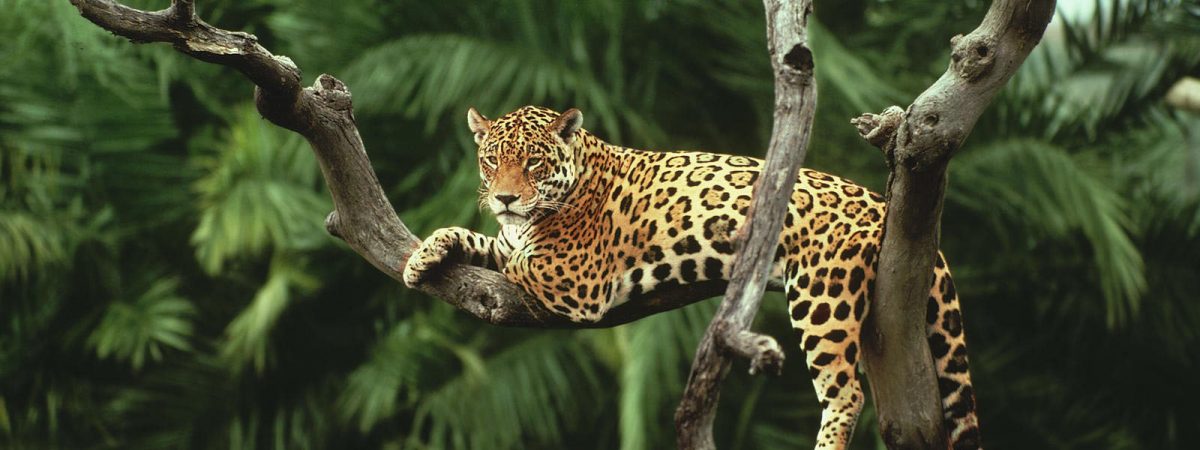While jaguar poaching is prevalent in neighbouring Suriname, local conservation management bodies say there are no official reports of such activities in Guyana, where concerns centre on better managing possible conflicts between the cats and farmers.
In Suriname, Jaguars are being traded on the black market and sold to Asian buyers comprising largely of Chinese nationals.
In September, an investigative report produce by InSight Crime, an investigative journalism organization, highlighted that the trade of poaching jaguars begins with miners, loggers and hunters, who chance upon a jaguar deep in the Amazon forest, or experienced poachers who head out to the field to kill a jaguar “on the off chance they can sell it, or if they already have a buyer lined up.”
After the animal is killed, it is sold to local Chinese merchants who set up around the mining camps. The buyers then get the animal to processors in Suriname’s capital, Paramaribo, who boil it down to a type of paste that is later smuggled out of the country.
The paste, which is believed to have medicinal properties, is made from the big cats, especially tigers.
While there is almost no case of such activity in Guyana, there are two documented cases of smuggling reported to the Guyana Wildlife Conservation and Management Commission (GWCMC).
Deuel Hughes, GWCMC Public Relations Officer, said a case was recorded in 2018, when a Chinese national was caught in Suriname with four jaguar teeth after travelling from Guyana. This matter was dealt with by Surinamese officials, he related.
An investigation is underway to track the reported sale of jaguar parts which was brought to the Commission’s attention through a Facebook post.
Hughes explained that from the Commission’s experience, jaguars are often killed in Guyana when there is an encounter with cattle farmers. “In some instances, when a jaguar is killed, the teeth are removed opportunistically by farmers and forest dwellers who find the carcasses. However, we cannot verify if these are sold or smuggled,” he explained.
However, while expressing concern over this trade, Hughes said that the Commission is empowered to prosecute persons caught in the act.
“Our legislation gives us the power to address such issues. According to Regulation 4 (7) of the Wildlife Conserva-tion, Management and Sustainable Use Regulations (2019) jaguars are protected and it is an offence to collect, hold in captivity, kill, hunt, or otherwise molest a protected species. The penalty for such action is a fine ranging from $750,000 to $2,000,000 and imprisonment for up to 3 years,” he said.
Hughes further noted that whenever a report is made, a full investigation is done to ascertain the details and to conclusively pinpoint any case of wrongdoing.
Meanwhile, Conservation International (CI), in an invited comment, said all efforts must be made to protect and ensure Guyana’s rich and unique wildlife, biodiversity and diverse ecosystems are preserved and sustained.
“We are concerned about the recent reports of extensive poaching of Jaguars for trade in Suriname. The practice of unsustainable exploitation and killing of wildlife, especially of protected and near-threatened species like the Jaguar an– iconic national symbol – must stop,” Curtis Bernard, Senior Technical Director at Conservation International Guyana, said.
Speaking on behalf of CI, Bernard said that every effort must be placed to reduce human conflicts with wildlife.
“We are not aware of any reports of the poaching of Jaguars at a scale similar [to] that reported in Suriname but are aware of human conflicts with the wildlife. We believe this can be reduced through efforts to better manage human encroachment into wildlife habitats and the adoption of policies and practices that will deter these conflicts,” he added.
On this note, he stressed that CI Guyana is supporting efforts to raise awareness of Guyana’s important species and works with communities to develop the sustainable livelihoods needed to maintain their natural wealth.
“Conservation International-Guyana has worked over many years to help develop sustainable means of utilization of these assets through means such as nature-based tourism, sustainable harvest of products, and innovative financing,” Bernard highlighted.
Guyana’s intact coastal and inland forests, wetlands and other ecosystems and the diversity of life they sustain, he said, must me managed wisely for the benefit of this current and future generations.
He noted that these efforts are tremendously valuable economic, cultural, and environmental assets to the country.
The jaguar is the largest cat in Guyana and the Americas but are threatened mainly by habitat loss, poaching due to livestock predation, demand for jaguar parts, decline of prey, and fear.
During a webinar organized by the World Wildlife Fund (WWF) and Women in Nature (WiNN) on International Day of the Jaguar, which was celebrated yesterday, Dr Evi Paemelaere, an International conservation biologist who has done extensive work with jaguars in Guyana, said that despite being predators jaguars provide exceptional benefits to the forest through their daily activity.
“Browsing animals that do not fear predators easily destroy vegetation along the river but with a jaguar around it helps to prevent erosion of the river banks [by scaring them away] and [to] protect the trees around to help regulate the temperature. So predators like jaguars can help these plants to do their work,” Paemelaere said.
“When biodiversity decreases the risk of zoonotic diseases increases. We are living the result of that now. Jaguars helps us to maintain this biodiversity so all in all we can say jaguars are the doctors of the forest by keeping it healthy,” Paemelaere further added.
With Guyana’s pristine and barely touched forest, Paemelaere said it is a perfect habitat for jaguar conservation. “Guyana is an important country to foster jaguar conservation because of its rich and extensive habitat with a low human population. The forest plays an important role in the survival of jaguars,” she said.






